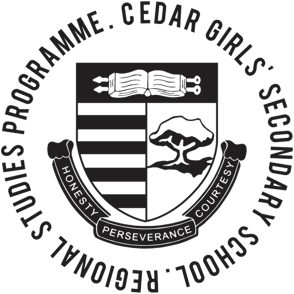Day 4 in Yogyakarta
Visit to Paku Alaman and learning about the restoration work they are doing to replicate how the area looks like in the past, learning about the different steps to batik-making and making our very own jamu (herbal drink) at the OG of jamu shops in Yogyakarta!
2024 YOGYAKARTA & SURABAYA
3/5/20244 min read
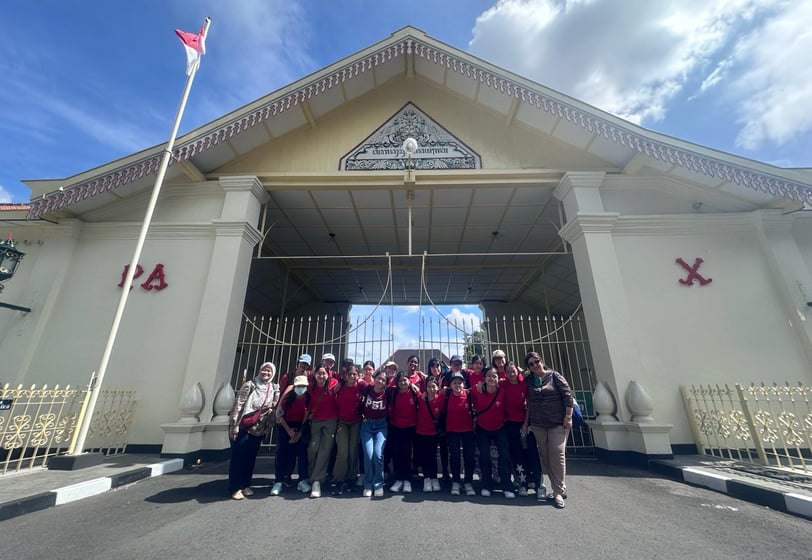

Today's visit revolves around the area around the Paku Alaman palace. Did you remember learning about the Mataram kingdom? The kingdom broke into two with the Giyanti Agreement on February 13, 1755, between Paku Buwana III and Prince Mangkubumi (the lineage of the current Sultan Yogyakarta HB10).
The visit revolved around learning more about the traditions upheld in the Paku Alaman community. This small kingdom still has a lineage that lives on, and we got the chance to visit the descendants and learn about their place of residence.
We saw a huge mosque that was said to be the largest in the area, and was constructed to bring the community together when Islam was getting more prominent in Indonesia. We also visited a large piece of land that was gifted to the first king of Paku Alaman for their help during the war against the Dutch. This piece of land had a few interesting features, one of them being a tree where its fruits grew on its trunk! Our guide informed us that this particular tree was planted in residences where there were female occupants, because of its medicinal aid in hydrating the body and shortening the menstrual period. Another interesting aspect we noticed was that there was a lot of Dutch influence in the architecture. The shapes of the buildings and the iron wrought detailing were not of the typical javanese style, instead we felt these showed European influences. Our friendly guide confirmed our guess that this was due to some dutch people having lived in the area during the colonial period, hence customising the architecture to resemble those close to the ones in their homeland. We were very amazed that Paku Alaman was able to stand for so long and found the rich culture intruiging.
This experience taught us to use our critical thinking skills to come up with possible answers to our own questions, based on prior knowledge. For example, we used our knowledge about the history of the Dutch colonial rule in indonesia to piece together a possible reason as to why the architecture had a European touch. We found this experience really fruitful and we will definitely be sharing about it with our friends and family back home!
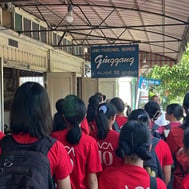

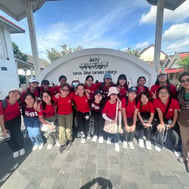
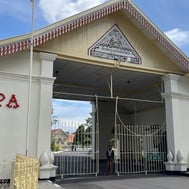
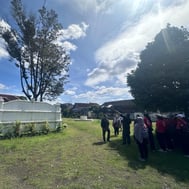
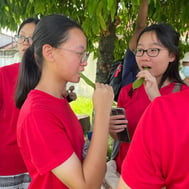
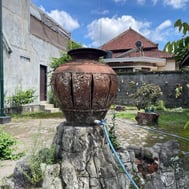
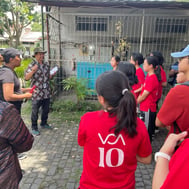
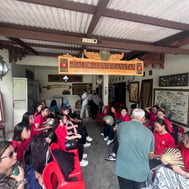
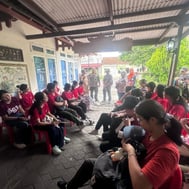
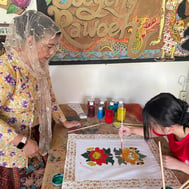
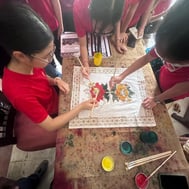
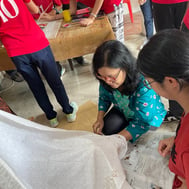

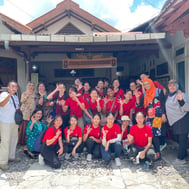

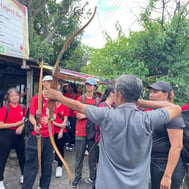
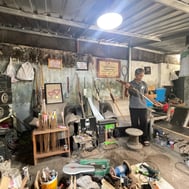
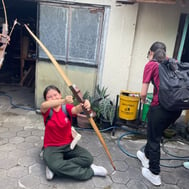
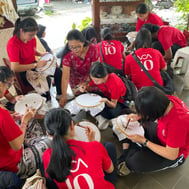
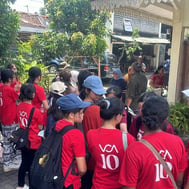
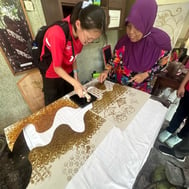
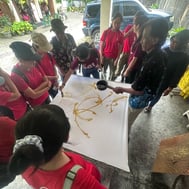
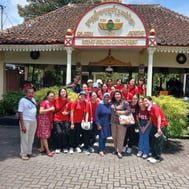
After walking in the community of paku alaman, we also got to learn about how the locals make bows and arrows for archery. The workshop we went to won many awards for the bows and arrows they created. The bow was made of real bamboo and was quite heavy. We were given a short explanation on how the bows were carved from the bamboo. Our guide told us that one perfect bow could take months to craft! After learning the various culture of the traditional archery in the paku alaman, for example how the locals in the past used it to hunt and shoot down birds, we also took turns to try pulling the bow back using the technique that our guide showed us. As compared to the modern archery, it was marvellous to find out that the people of paku alaman use their "gut feelings" to shoot the arrow, instead of using their eyes to look at their target. Through this activity, we learnt the differences between Singapore’s way of playing archery and Paku Alaman's way of playing archery. This allowed us to reflect upon differences between cultures of different countries, which emphasised the importance to understand other countries' culture and traditions to maintain diplomatic ties.
At the batik museum, we managed to try our hand at using hot wax to trace pre-drawn batik designs! When the wax hardened, we painted over the whole cloth with either red or blue dye, which our mentor told us would bring the batik design to life. The hardened wax would act as a barrier between the dye and the cloth, ensuring the design could be printed clearly. When the dye fully seeped in, our pieces were brought to the processing room where they were boiled and the wax fell off. We could finally see our batik pieces and we were really proud of them!! We had a lot of fun and practiced a lot of patience when creating them and customising them. This experience taught us about the labor that goes into creating such a small piece of art and the importance of preserving our culture.
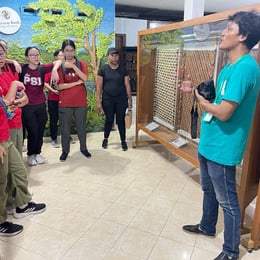
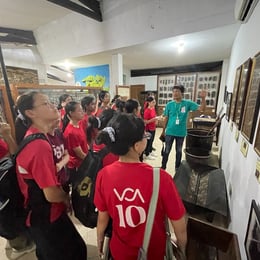
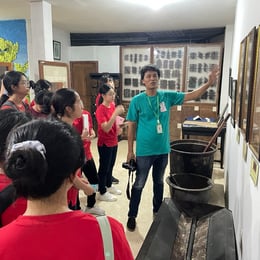
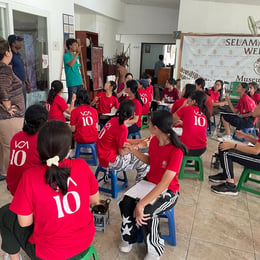
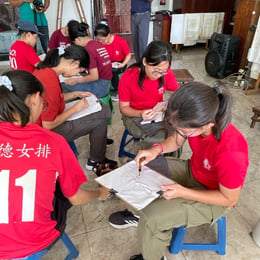
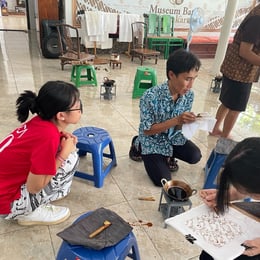
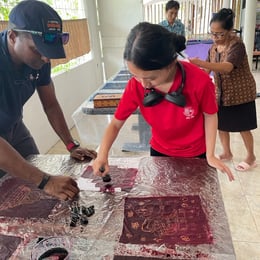
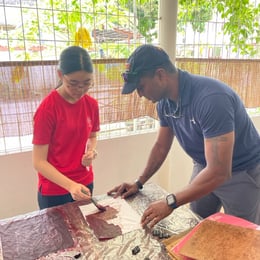
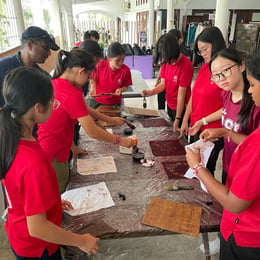
After batik painting, we went to a traditional javanese restaurant to taste the various Javanese delicacies and traditional tea. The architecture of the restaurant was vastly different from the modern restaurant, with no air-conditioning, small cooking area and mamy features of old building, etc. We had a tea break which allowed us to recharge our energy to get ready for the next hands-on activity. During this tea break we could sample many different local pastries like pandan cake with cheese and a lapis roll layered with jam. Next, we went on to making traditional ginger herbal tea. Firstly, we got to first handedly experience how to wash and peel the skin off the ginger easily by rubbing and pushing the ginger against a rough surface in the hole on the floor. Next, we pounded the clean ginger in a wooden mortar and pestle. We learnt that when the ginger is still in its original shape, we should pound it softly. This is to prevent the ginger pieces from shooting out of the bowl. When the ginger starts to become crumbly, we should pound the mixture with great force. Finally, once the ginger is pounded, it will be mixed with brown sugar only. One reason why brown sugar is incorporated into the ginger because people of Jogyakarta like to have their meals on the sweeter side. Outside of Jogya, sugar is not mixed in. Then, warm water will then be poured on the ginger sugar mixture, to sieve the liquid. The liquid collected will to be tea, which is ready to drink. In the end of the activity, we got to taste the ginger tea we made with hard work and effort. Additionally, we even bought home a bottle of ginger tea, which can be shared among our family members to let them try the special javanese tea. Surprisingly, the tea has many health benefits like warming up the body, etc. Through this activity, we learnt more about the delicacies of different countries and also their method of preserving the javanese culture, which made us feel the importance of preserving our own culture as well!
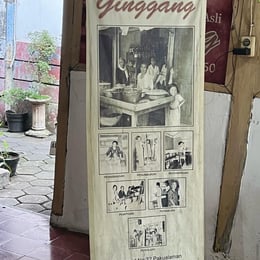
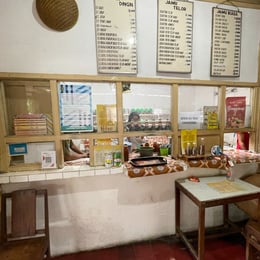
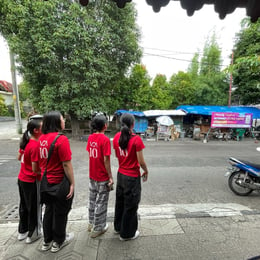
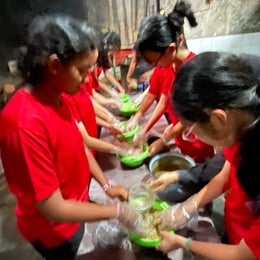
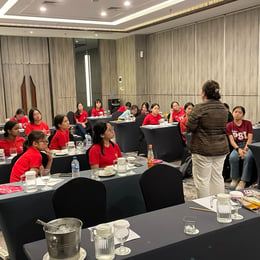
Thanks for joining us for the past few days learning and experience Jogjakarta's culture and history! Tomorrow's entry will be a recap of our day 1 in Surabaya. See you in the next entry!
Signing off,
Julia & Rongfang


